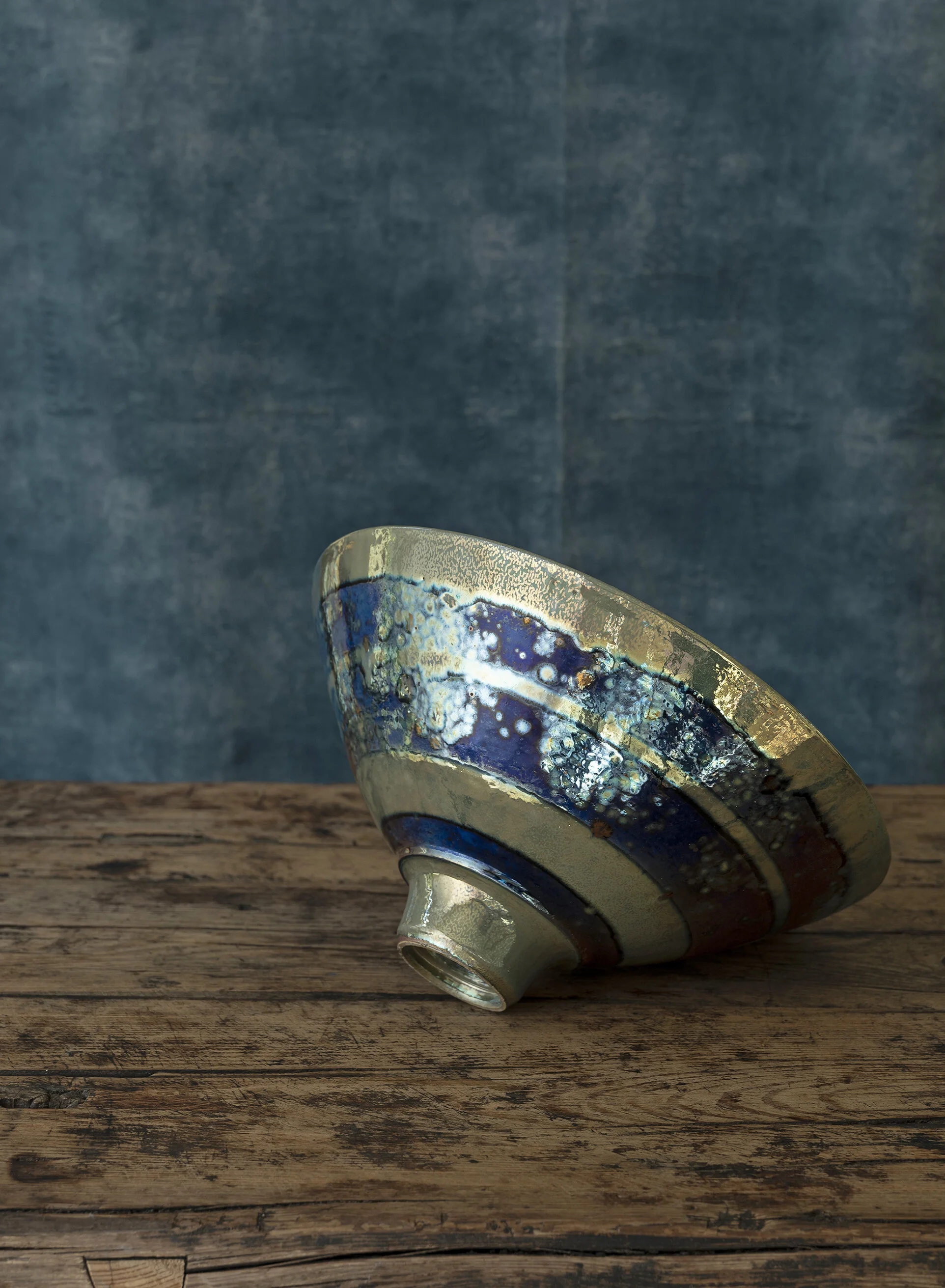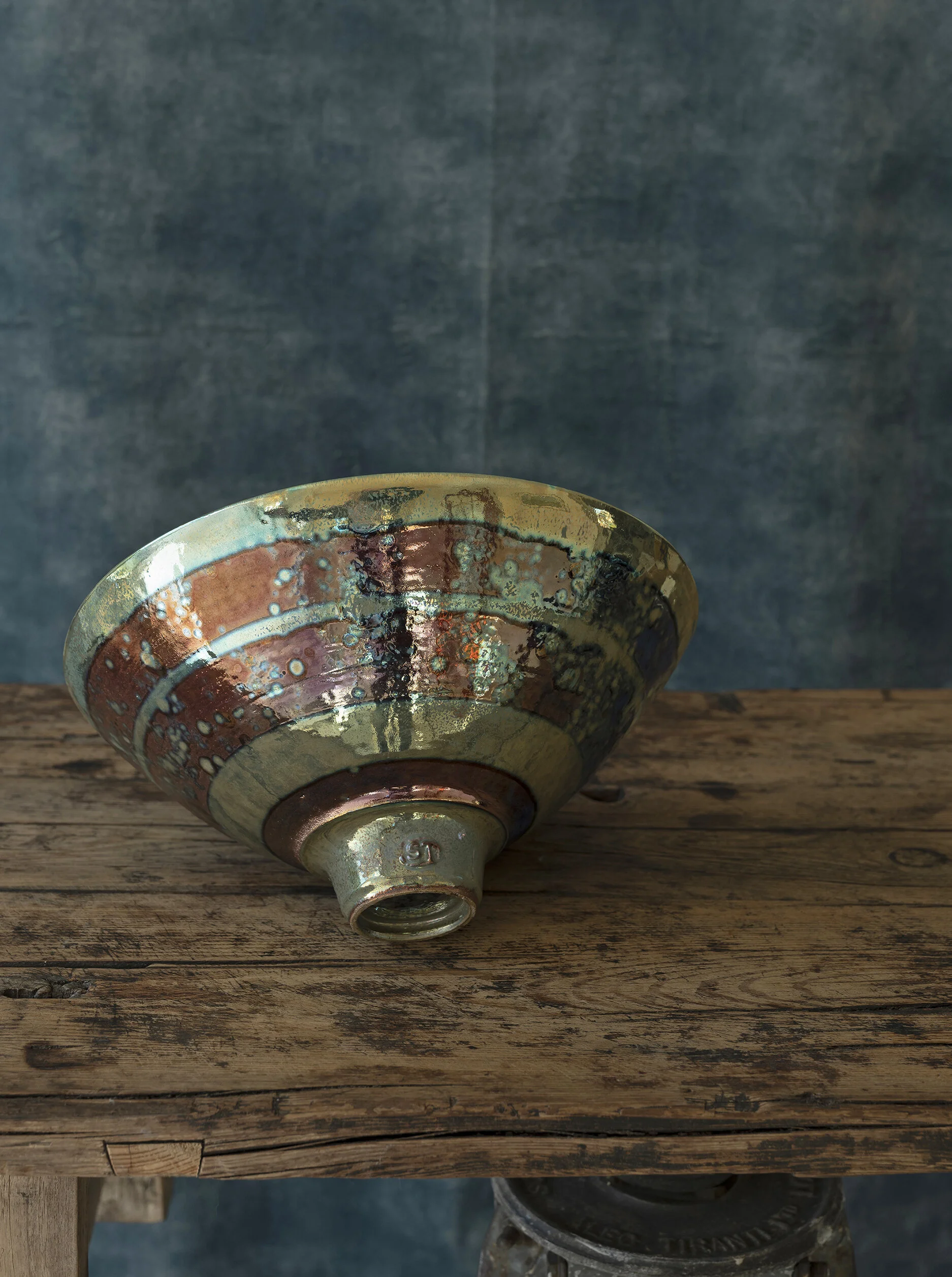
Sutton Taylor
Despite originally training as a teacher, on his travels in Jamaica, Mexico and the USA he met several potters which inspired him to return to England and set up his first pottery in Yorkshire, where he began to work in stoneware and porcelain. He also experimented widely with laminated clays. In 1974 he set up a wood fired kiln, experimented in raku using local clays, until eventually he came across the ancient art of lustre, which originated in 9th-century Mesopotamia and is known for its opulence and iridescence. It became the focus of his subsequent career.
Having taught himself the notoriously difficult lustre technique, Sutton exhibited his first pieces of Lustreware in Leeds in 1976, and has continued experimenting with it ever since, even to the extent of making his own glazes, to produce one-off colours, combinations and textures. Lustre is extremely temperamental, particularly at the unusually high temperatures that Taylor uses to yield the effects he is seeking, and so his dazzling pieces are the result of years of experimentation, experience, instinct and intuition – particularly in the firing process. Some of his pieces have been fired and re-fired several times to achieve the desired result.
Since 1995 Taylor has lived and worked in westernmost Cornwall, where the magical light and landscape that inspired some of the 20th century’s greatest painters is also the inspiration for his ceramics.
Sutton Taylor is renowned internationally for his beautiful and highly individual ceramics. His work is represented in numerous public collections including the V&A Museum, Los Angeles County Museum, the Alhambra Museum in Spain, the Fitzwilliam Museum in Cambridge and the Ashmolean Museum in Oxford.









Bowl
Lustre glazed bowl, circa 2012. Raised ‘ST’ monogram around the footing. Appoximately 29cm wide by 14cm high
Please enquire
